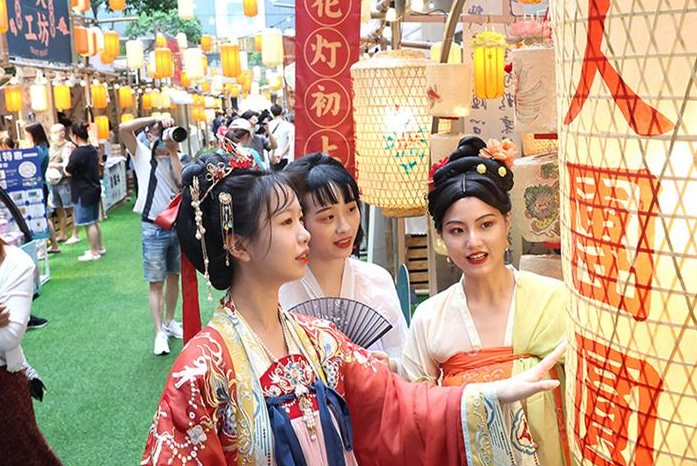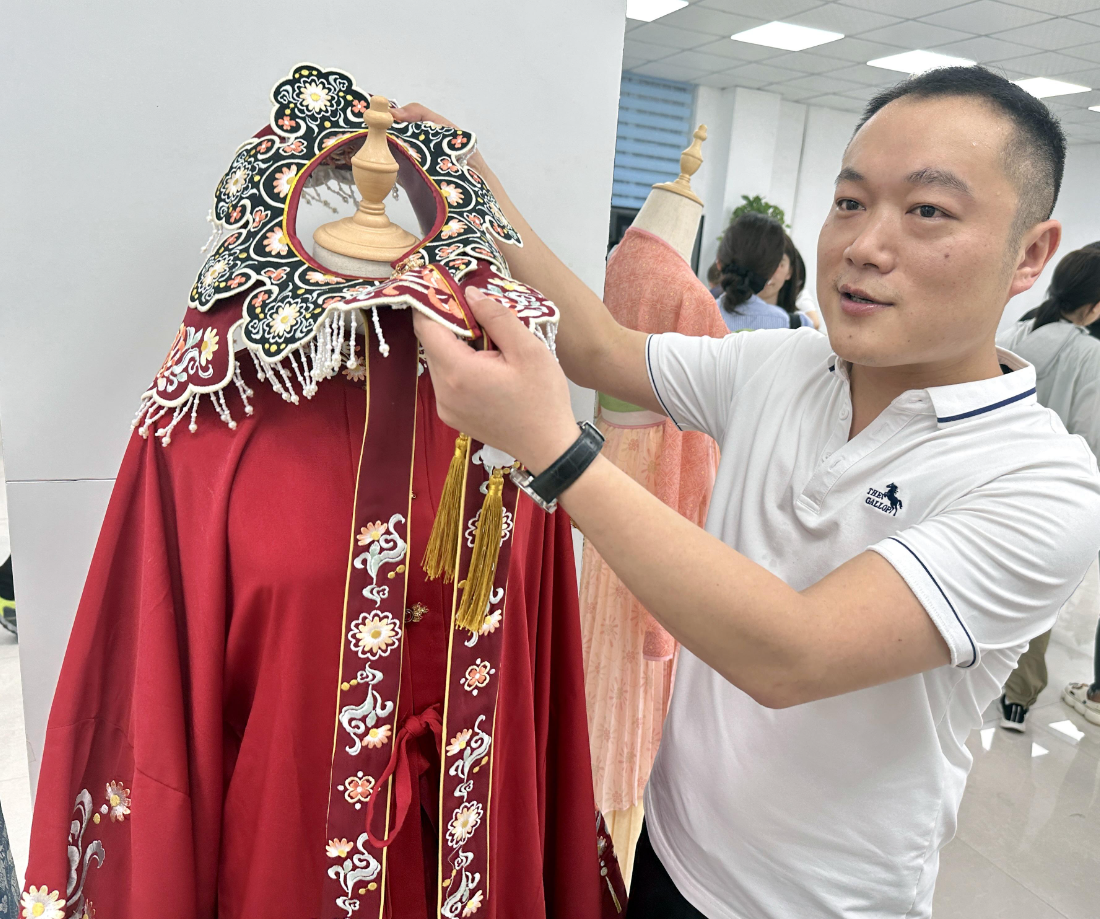The global market size of the Hanfu industry reached approximately $2 billion USD in 2022, with a 15% year-over-year growth rate.
Global Market Overview
Market Size Estimates
The market size for the Hanfu industry has been growing exponentially in the past decade. According to the most recent data, the global market value for Hanfu apparel and accessories reached approximately $2 billion USD in 2022. This marks a remarkable 15% year-over-year growth rate.
While the market originally started from a small base, the popularity of Hanfu has surged due to various factors, including an increase in cultural awareness and a rise in disposable income among consumers.

Market Segmentation
The Hanfu market isn’t a monolith; it has multiple segments, each with its own dynamics and consumer base. These can primarily be categorized into:
- Apparel: This includes different styles of Hanfu, ranging from formal to casual wear. This segment accounts for about 65% of the total market.
- Accessories: This consists of traditional Chinese accessories that are commonly worn with Hanfu, such as hairpins and jewelry. About 20% of the market is comprised of accessories.
- Footwear: Traditional Chinese shoes that accompany Hanfu attire make up around 10% of the market.
- Others: Custom designs, DIY kits, and other miscellaneous products make up the remaining 5%.
Understanding these segments is crucial for any brand or investor looking to tap into this industry. Consumer preferences vary across these segments, largely influenced by factors like age, gender, and cultural heritage.
Geographic Distribution
The global demand for Hanfu isn’t evenly spread; rather, it is highly concentrated in certain regions. The major markets include:
- China: Not surprisingly, China stands as the largest market for Hanfu, with more than 70% of global sales. The trend is deeply rooted in a renewed interest in traditional Chinese culture.
- United States: With increasing cultural exchange and the popularity of Chinese cultural festivals, the U.S. accounts for about 10% of the global market.
- Southeast Asia: Countries like Vietnam, Thailand, and Singapore are also emerging markets, jointly contributing to around 8% of the global Hanfu market.
- Others: The rest of the world, including Europe and other parts of Asia, account for the remaining market share.
Understanding these geographic nuances is vital for targeted marketing and strategic planning for businesses looking to expand in the Hanfu industry.
Domestic Market in China
Market Size and Growth
The Hanfu market within China is a significant driving force for the industry globally. According to recent statistics, China accounts for more than 70% of the global Hanfu market, estimated to be worth around $1.4 billion USD in 2022. The market has seen an annual growth rate of nearly 20%, far outpacing many other sectors in the apparel industry.
Factors such as increasing disposable income, a resurgence in nationalism, and strong government initiatives to promote Chinese traditional culture have fueled this growth.
Consumer Demographics
The consumer base for Hanfu in China is diverse yet has some clear trends. Notably, the younger generation, particularly those between the ages of 18 and 30, make up a significant portion of the consumers. Female consumers outnumber male consumers, representing approximately 65% of the market.
There’s also a strong connection between educational background and consumer interest in Hanfu. Those with higher educational qualifications, especially in fields like history, art, and culture, show a greater affinity for Hanfu clothing and accessories. This draws attention to the importance of cultural literacy in driving market demand.
Regional Hotspots
Geographically, the market for Hanfu in China isn’t uniform; it varies significantly from region to region. Here are the major hotspots:
- Beijing and Shanghai: These two cities are at the forefront, accounting for nearly 25% of national sales. Both cities have numerous Hanfu stores and cultural events, feeding the demand.
- Sichuan and Zhejiang Provinces: Known for their rich history and culture, these regions are emerging as significant markets, each contributing about 10% to national sales.
- Online Platforms: Interestingly, e-commerce platforms like Taobao and JD.com have become vital channels for Hanfu sales, making up around 30% of total domestic sales.
This geographical information is crucial for companies aiming to strategically position their stores and target their online ads.
International Market
Market Penetration in Different Countries
While China remains the epicenter of the Hanfu movement, the fashion trend has seen growing interest internationally. The United States, for instance, holds approximately 10% of the global Hanfu market. This rise is closely related to the increase in Chinese diaspora communities and the broader appeal of East Asian culture. Countries like Japan and South Korea have also shown an increase in Hanfu adoption, often incorporating it into their own traditional fashion shows and cultural events.
Moreover, Hanfu is gaining traction in European countries, such as the United Kingdom and Germany, albeit at a slower pace. Marketing strategies, like participation in international fashion shows and cultural festivals, have been successful in raising awareness and generating sales.
Export Figures
Exports of Hanfu have seen a consistent growth over the years. In 2022, China exported Hanfu merchandise worth approximately $200 million USD. The main export destinations include the United States, Canada, and several countries in Southeast Asia. Online platforms like eBay and Amazon have become popular channels for international consumers to purchase Hanfu, indicating the increasing reach of this traditional Chinese attire through e-commerce.
Cultural Influence Abroad
The spread of Hanfu internationally is not just a business phenomenon but also a cultural one. Many schools and universities abroad now offer courses and workshops focusing on Chinese traditional culture, including Hanfu. This academic interest significantly boosts the market and creates a sustained customer base.
Key Players in the Industry
Leading Brands
There’s no shortage of brands contributing to the Hanfu movement, but a few have gained significant attention for their quality and innovation. “Hanfu Emporium,” for instance, is an industry leader known for its meticulous craftsmanship and high-quality materials. Another brand, “Cultural Threads,” focuses on infusing modern styles with traditional elements, capturing a younger demographic.
These brands have successfully expanded not just domestically but also on a global scale, leveraging brand recognition and cultural influence.
Market Share Analysis
Among the various players in the Hanfu industry, “Hanfu Emporium” holds about 20% of the market share, followed by “Cultural Threads” at 15%. Newer brands like “Dynasty Chic” and “Eternal Elegance” are also rising stars, capturing approximately 5% market share each.
Interestingly, online platforms are a significant factor in shaping these market shares. Brands with a strong online presence, particularly on social media and e-commerce websites, have higher visibility and therefore generally command a larger slice of the market. Understanding these market dynamics is crucial for any business looking to carve a niche or maintain leadership in the Hanfu industry.

Partnerships and Mergers
Collaborations between Hanfu brands and other sectors have become increasingly common. “Hanfu Emporium” recently announced a partnership with a major tech company to develop AR-enabled fitting rooms, allowing customers to try on different outfits virtually. Meanwhile, “Cultural Threads” merged with a leading fabric producer to sustainably source high-quality materials for their products.